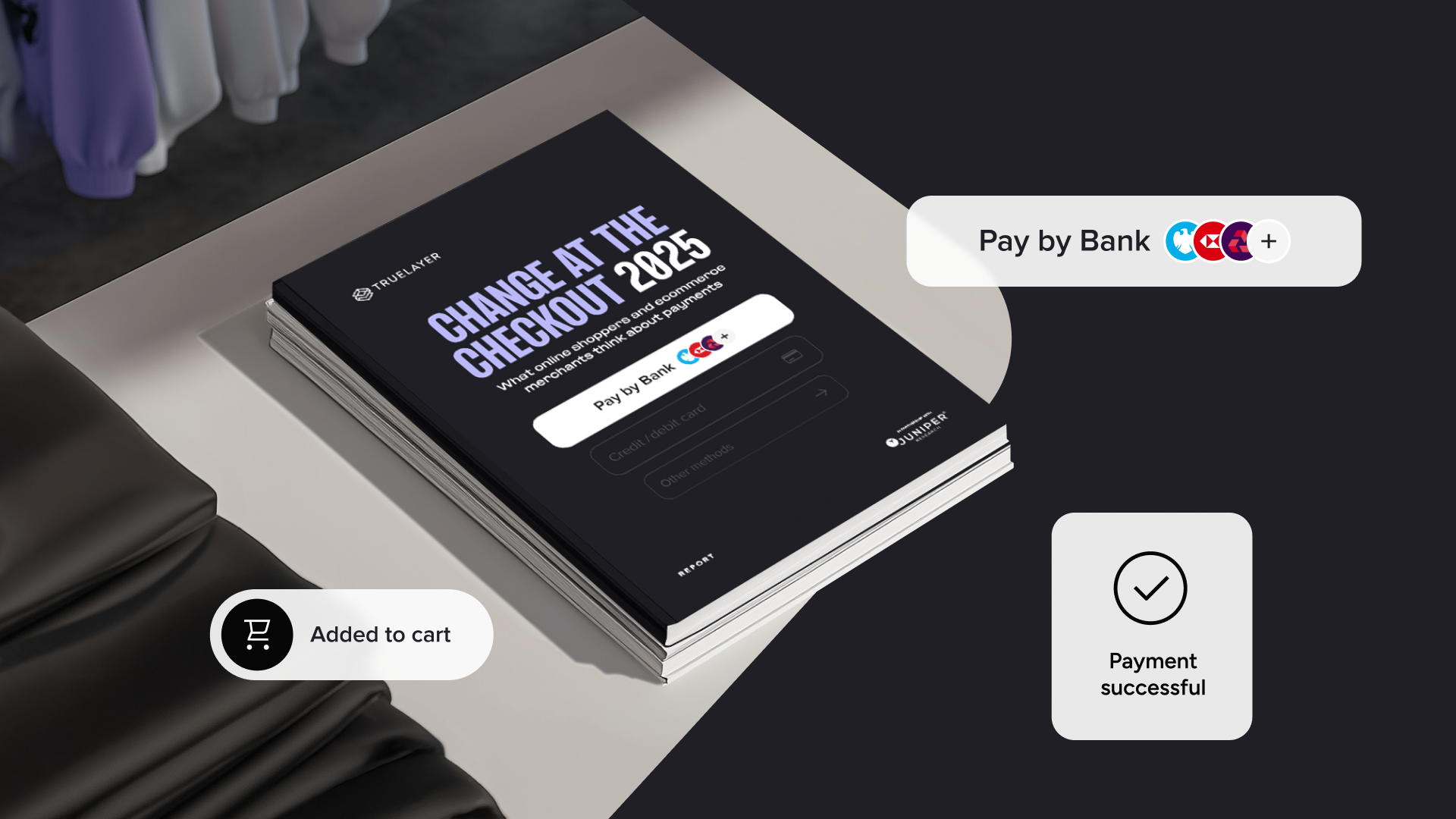Variable Recurring Payments and sweeping: everything you need to know

Variable recurring payments (VRPs) leverage open banking technology to create a better experience for businesses and consumers alike. Combining the benefits of card-on-file, direct debits and standing orders, VRPs let consumers set up repeat payments of varying amounts securely and easily.
Currently, the UK’s nine largest banks must offer VRPs to consumers to facilitate a process known as ‘sweeping’. This allows account holders to move funds between two accounts that they own, giving them more flexibility and control over their finances. While VRPs are mandatory for these nine institutions, many additional banks have voluntarily embraced the benefits of sweeping.
So why are variable recurring payments and sweeping such an important development for both businesses and consumers? And how do they work in practice?
What are variable recurring payments (VRPs)?
VRPs allow merchants to take payments of varying amounts from customers at routine intervals. Compared to traditional recurring transactions, they offer a smoother customer experience with minimum friction.
To get started, customers set up a mandate that enables merchants to take payments from the customer’s account under specific conditions. These parameters include the maximum amount that can be taken per payment and the maximum amount that can be taken in a weekly, monthly or yearly time frame. From then on, payments will be initiated without the customer having to take any action.
Customers maintain complete control over these payments. They're able to cancel the recurring payments at any time.
While direct debits and VRPs both enable recurring payments, they’re not created equal. VRPs rely on open banking APIs to initiate payments. They also facilitate a series of payments for a customer of variable amounts and intervals.
This is a change to the open banking status quo, which only allows single immediate payments and where customers have to authenticate each payment separately.
VRPs vs direct debit
VRPs provide merchants with an important alternative to direct debit and credit cards. These APIs offer the same flexibility, but with lower fees, no chargebacks, immediate settlement, reduced risk of fraud and enhanced control for consumers.
Look at settlement time, for example. Direct debit transactions don’t clear for up to three days, and take even longer to settle. This is less than ideal for products like investment apps, where long wait times can have a significant impact on returns. Since VRPs settle almost instantly, they allow users to see the benefits of their transactions immediately.
What is sweeping?
Sweeping involves the automatic movement of funds between two accounts that a customer owns. Think of it as a ‘me-to-me’ payment. A prime example is when a current account is set up to move surplus money into a savings account, or to automatically pay off an overdraft somewhere else.
Financial service providers automatically move money between accounts all the time. This usually involves methods like direct debit. Sweeping with VRPs makes the process faster, easier and less expensive.
What are the main use cases for sweeping?
So what does sweeping look like in practice? Last year, the CMA set down an official list of sweeping use cases. It includes:
Sweeping between current accounts
Sweeping to credit accounts
Sweeping to cash savings accounts
Sweeping between current accounts
A basic example of sweeping is when someone moves funds between two ‘current accounts’ that they own.
In this case, a current account is anything that stores customer deposits, facilitates payments by cheque and debit card, or allows for direct debits and standing orders. Business accounts are eligible under this definition, as are current accounts from e-money institutions like Revolut and more.
Sweeping to current accounts allows consumers to avoid overdrafts and manage their current accounts with greater flexibility.
Transferring funds to credit accounts
In select cases, users can sweep funds to pay off a credit account, card or unsecured loan. This includes credit cards issued by banks and card issuers alike.
Customers can also repay loans such as student debt and store card purchases, or sweep funds between credit accounts to prevent unarranged and expensive overdrafts.
Moving money between cash savings accounts
Businesses like Chip and Plum currently use open banking data to monitor how much disposable income or spare money customers have in their accounts. They can then automate sending the money to savings or investment accounts, to maximise its potential.
Sweeping means that personal finance apps can rely on open banking as a payment method. The movement of money will be quicker, cheaper, and the customer will have more control.
Over time, we could also see other me-to-me use cases as VRP APIs become available.
What else could VRPs potentially be used for?
In addition to sweeping use cases, VRP infrastructure enables a host of other use cases through commercial agreements between banks, TPPs and merchants. This takes VRPs beyond ‘me-to-me’ payments and into the realm of ‘me-to-business’ payments. Examples include:
Regular household bills: VRPs allow customers with irregular incomes to pay varying amounts at varying times, allowing them to settle their energy bills on their schedule.
Digital and physical subscriptions: customers could use VRPs to manage their subscriptions directly from their banking apps, allowing them greater control over their recurring payments.
Investments: while this currently falls outside the scope of sweeping, VRPs can be used to move money automatically into higher interest investments.
Deliveries: since VRPs can take variable amounts from a customer’s account, they can facilitate substitutions easily until the point of delivery, making them ideal for grocery and meal delivery payments.
One-click checkouts: ecommerce merchants can use VRPs to provide seamless one-click checkout experiences to customers. Once a VRP mandate is set, no further SCA is required.
At TrueLayer, we believe the first step in this process is to develop an industry-wide framework for commercial VRPs. To learn more, read our report, Beyond sweeping: a blueprint for commercial VRP.

3 tipping points for change within ecommerce payment experiences

How to reduce ecommerce cart abandonment

)

)
)
)
)